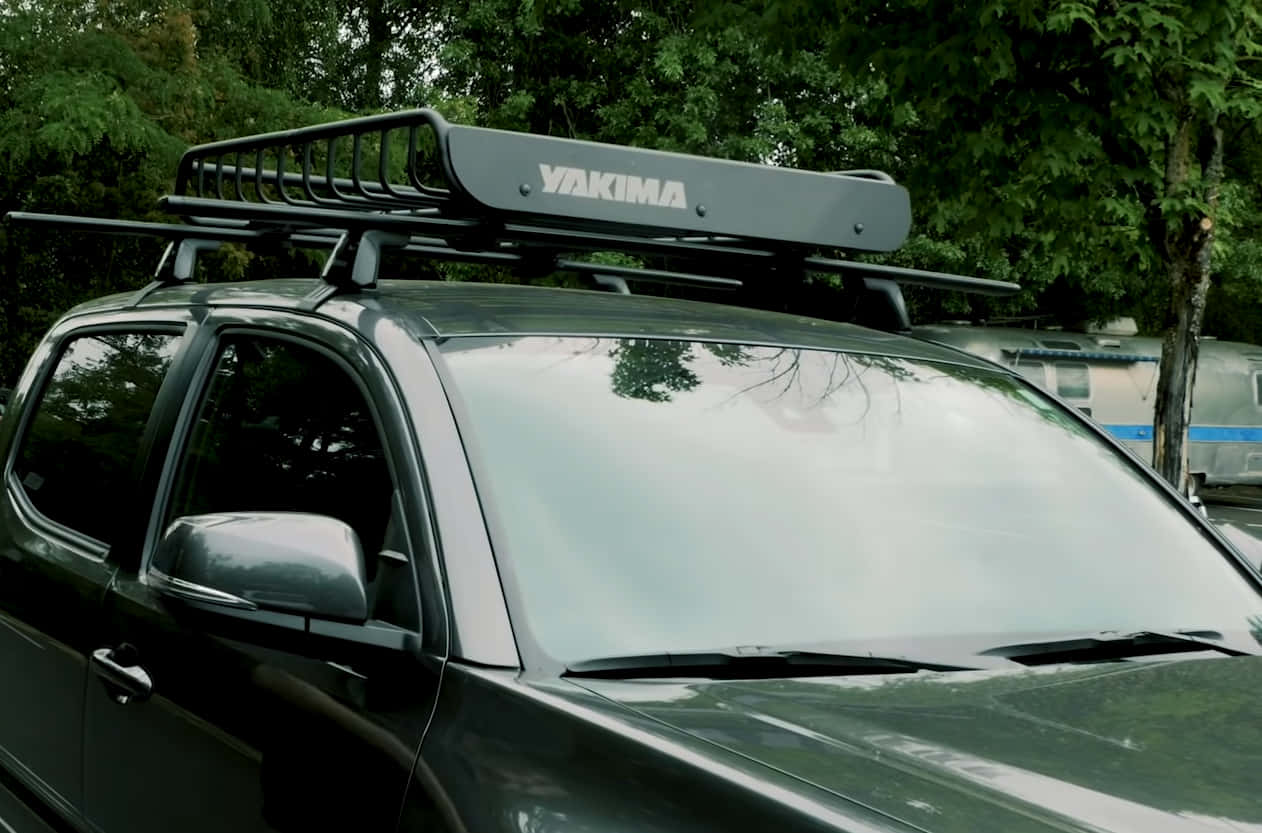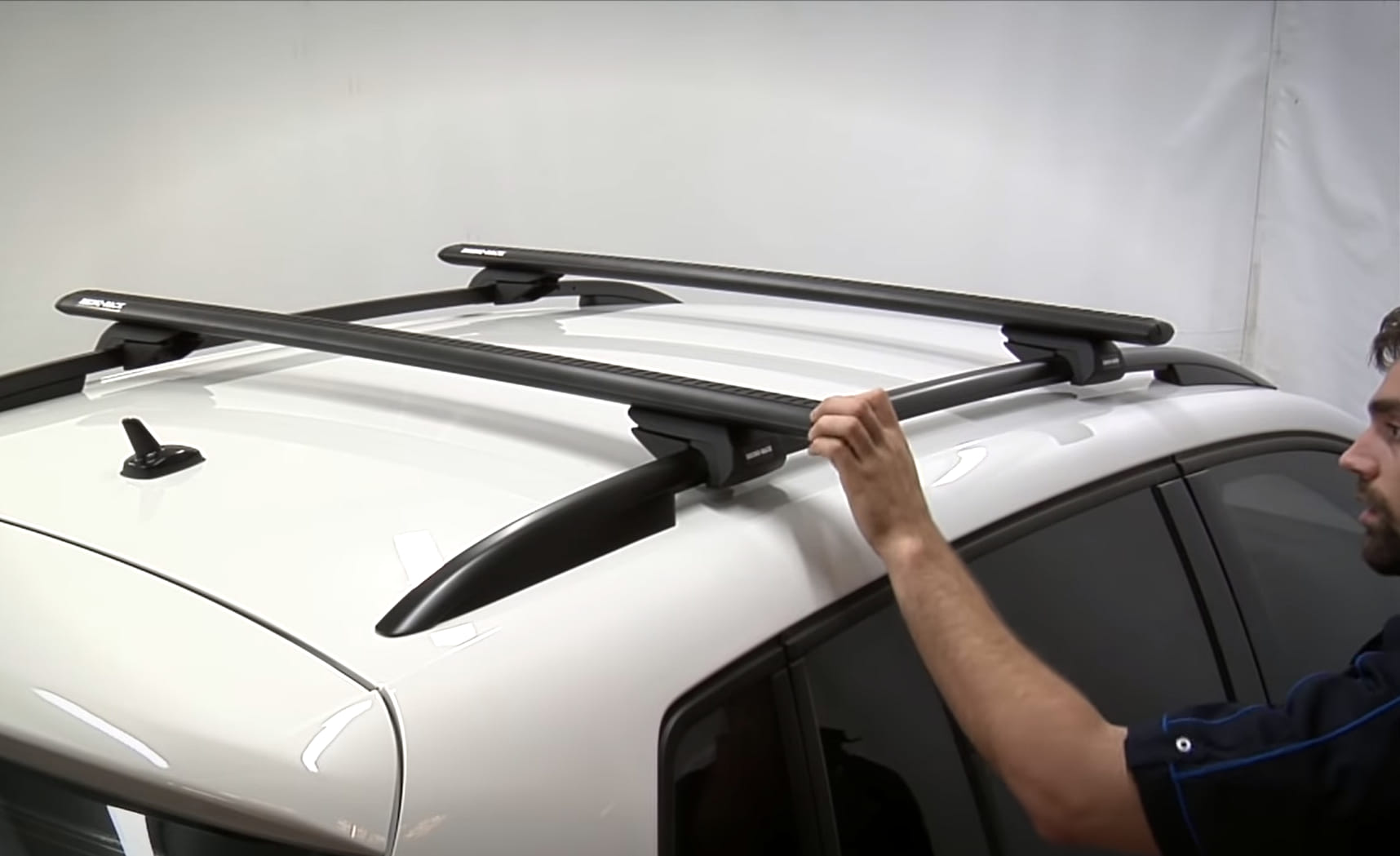A lot of people would like to know – do roof racks damage your car?
If you have roof racks on your car for your heavy loads, you may be wondering if these can have an impact on the body of your vehicle.
So, what’s the real deal? Does it really cause damage to your car or not?
Today, we’ll cover what exactly roof racks do to your car, if they damage the vehicle over time, and what you can do to alleviate any issues with your roof racks. Let’s get started.

Contents
Do Roof Racks Damage Your Car?
The short answer to this question is a yes.
Roof racks most definitely cause damage to your car. Well, unless certain precautions are applied.
For instance, if you install your roof rack incorrectly, or it is not tight enough, then the chances of it sagging is quite high. This is why it is possible for accidents to occur, as well as damages to your car to happen, when you have a roof rack that is poorly installed.
When you drive your vehicle at high speeds, specifically when it’s rainy, then your heavy loads on top of the rack may cause the latter to sag.
Another thing that can happen is that a twisting force between the nuts and bolts, as well as the racks may occur as you drive when the rack is not set up correctly. This impacts the stability and loading of roof backs, which can cause accidents while driving your car.
Understanding How Roof Racks Work
The roof rack is a type of framework you install on top of the car. It is used for carrying luggage to give more interior space in your vehicle. These racks are installed on different types of vehicle such as station wagons, hatchbacks, and vans.
There are different classifications of racks depending on the strength, size, and the type of load they can handle. The material used to make these racks also vary such as aluminum or solid steer.
Nowadays, aluminum roof racks are more common because of their affordability and ease of installation.
Speaking of installation, there are certain steps to consider to make sure the racks will not cause damage to your vehicle over time.
Before you begin, check all of the parts of the rack. This way, you can be certain that there is no damage to it such as loose nails poking out. The worst thing you can do to your vehicle is to get the paint scratched up.
Mounting systems also vary from one vehicle to another. Some vehicles such as an older model of car or four wheel drive uses the gutter mount system. This comes with a metal lip on the side of the vehicle, which allows for clamping the roof rack. On the other hand, newer vehicles come with roof channels and a removable cap to expose the mounting portion.
Additionally, there are roof rails that allow you to place the roof rack on your car.
How To Install Roof Racks Correctly To Prevent Damage To Your Car

Considering the fact that roof racks cause damage to your car over time, let’s have a look at the right ways to install the rack to prevent this issue.
1. Check the mounting system.
The very first step when installing the roof rack is by determining the mounting system required. This way, you will know for sure what is needed. There are roof racks that you can attach to the roof of your vehicle using fit kits, crossbars, and others.
If your vehicle has a curved roof, then you may get a short roof adapter prior to mounting the roof rack. This way, it can help to distribute weight on both doors.
2. Put together the frame of your roof rack.
Once you have determined the mounting system, you can now screw the side rails and the crossbar. Next, place the frame on your vehicle. It can help to center the rack on your car. Measure the distance from the rails to the front and back of your roof.
3. Uncover your mount holes.
For this step, you will need to drill some holes into your roof to make sure the rack will fit. But if you have mount holes that are factory-issued, then this spares you from having to drill any hole.
4. Fix your roof base by tightening the screws.
Now, you are ready to tighten your screws. Insert these through your roof rail, which can allow you to fix the roof rack’s base to your vehicle.
If you have roof rails, check for thumbscrews for loosening the rails. This will help you to alter the location when need be.
5. Clamp it down.
And lastly, you need to clamp your mounts down on your crossbars. Begin from the back portion of your car and move your way to the front. The position where you place the mounting clamps depends on the type of load you are carrying with the roof rack.
Once you have done all of these steps, you can check the weight capacity of your roof rack to avoid overloading it. Otherwise, putting too much load than you should will cause damage not only to the racks but to your vehicle, as well.
How To Avoid Damage To Your Car When Using Roof Racks
Now that you know the proper way to install a roof rack, let’s talk about do’s and don’ts to prevent damages to your vehicle.
First, you want to make sure that you use a roof rack with the right dimension. It should fit perfectly well on your vehicle, since loose or tight racks can eventually cause damage.
Next, read your setting manual. This will help you to know how your rack works, as well as the weight capacity.
And most importantly, put grease regularly. If you use the roof rack regularly, it needs to be greased. Exposure to external elements such as rain and sun will eventually cause it to wear down.
When you are not using the roof rack, it is best to remove it. After all, the racks impact fuel efficiency. This is why to ensure proper aerodynamics and greater fuel efficiency, you should simply remove it when there is no reason to keep it installed on your vehicle.
Read More: What Happens If Ignition Timing Is Too Advanced? Problems To Consider
Bottom Line
Roof racks are useful for those who need additional storage spaces on their vehicle. This is why it is important to follow these steps, so you can be guided accordingly when installing the racks and preventing damage to your car.